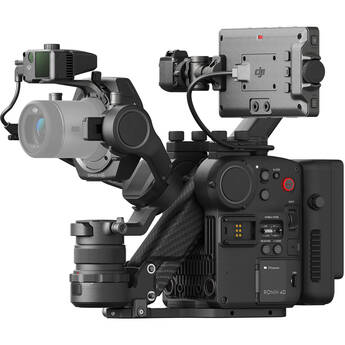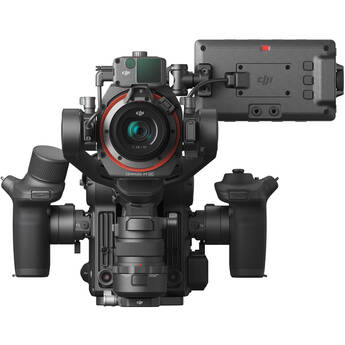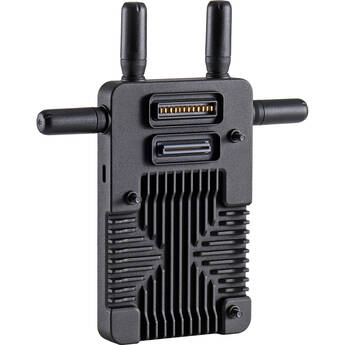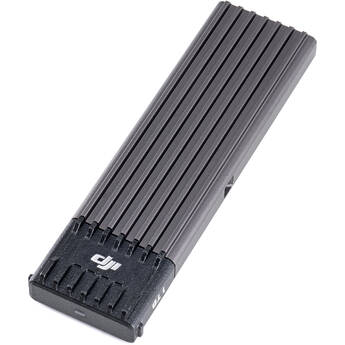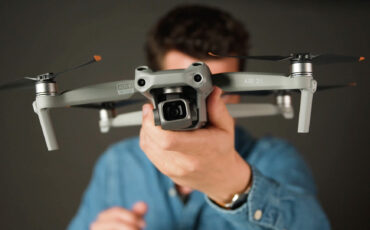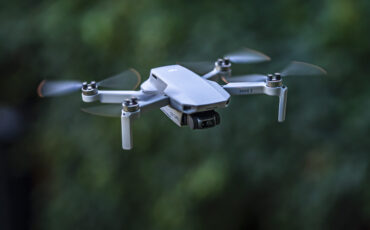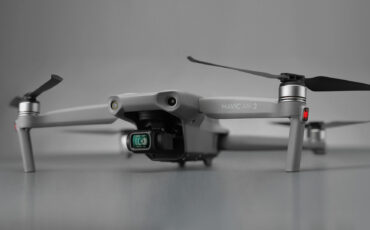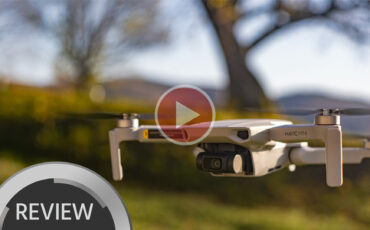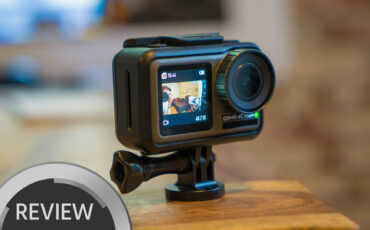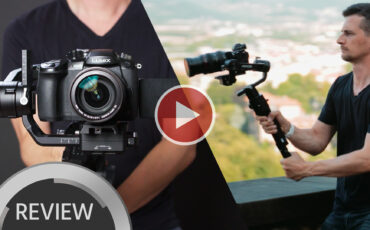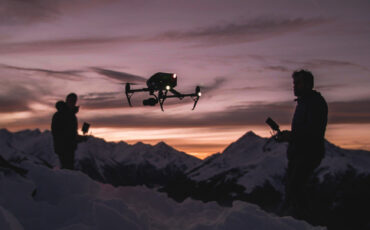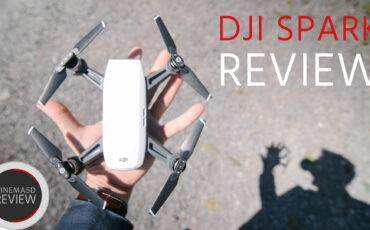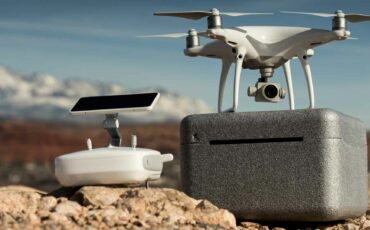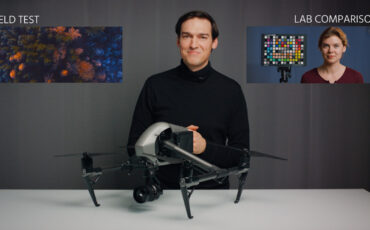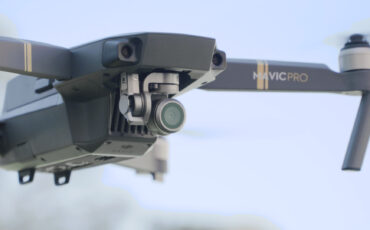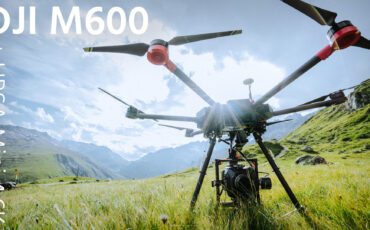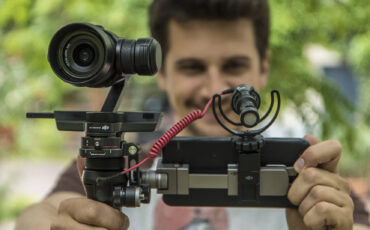DJI Ronin 4D Review – This is the Ultimate Stabilized Camera
Music Courtesy of Epidemic Sound
DJI just announced the Ronin 4D – a full-frame camera with a built-in gimbal – or is it a gimbal with a built-in 6K/9K camera? With wireless video transmission capabilities and control system and ProRes RAW recording. Anyway, we had it for a while, and I was able to test it in depth. Here is my first-look Ronin 4D review!
Yes, this is a review – so it has to be unbiased. (For our news article on this new device, click here.) But honestly speaking, I find it SO HARD not to get excited about the Ronin 4D from DJI. It is something completely revolutionary in my eyes – the marriage between a gimbal and a camera that was long overdue. Of course it’s not perfect, but it will shake the industry for sure.
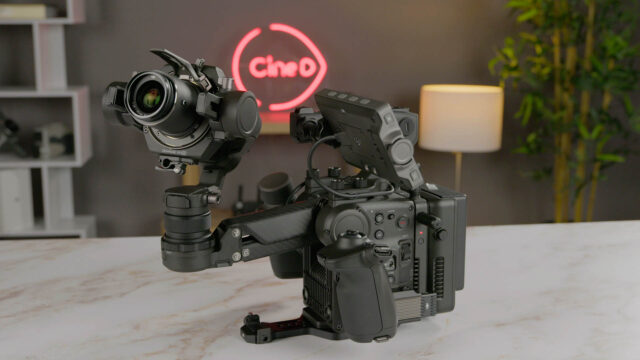
A look back: the gimbal revolution
When the first handheld gimbals were announced 8 years ago, it was the Freefly MoVi M10 (here is a test that I did at the time), I asked: can we build this technology into a camera?
Turns out, that wasn’t so easy, so we saw many years of advancements in the gimbal field, with DJI and others advancing the technology further and further. The one-hand gimbals really became the standard over the last few years, with high-quality cameras shrinking and getting lighter as well.
Filmmaking for Photographers

At the same time, DJI developed high-end image transmission systems for their drones, and also learned how to build proper interchangeable lens camera modules with the Zenmuse X5 and X7 cameras for their Inspire drones. (Here’s more information on the Zenmuse X7 including a DJI interview, and here’s a full review.)
And here we are, it’s 2021, and DJI engineers probably spend years in their cave to come up with the culmination of all these technologies, the Ronin 4D.
DJI Ronin 4D – a fitting name or not?
Before talking about the specs of this device – I can’t even just call it “camera” – let me point out that I don’t think the name does it justice. DJI used to call their gimbals Ronin, then they kind of dropped the Ronin and called them only RS2 and RSC2, but their Ronins never contained a camera. Now this here really is a league of its own and it would definitely deserve its own name!
Key feature: the Z-axis, the 4th dimension
But now back to the Ronin 4D review – anyway, the “4D” in Ronin 4D is actually quite accurate. On top of what normal 3-axis gimbals are able to do, the Ronin 4D adds a 4th axis, the Z axis, to the stabilization experience. And that’s also its key feature – having the Z axis means that the typical vertical shake that is introduced by walking or running is completely evened out. That means you can shoot super steady images with this, no matter how you move the camera. The way DJI achieves that vertical stabilization is through utilizing sensors in the front and at the bottom of the Ronin 4D which measure its position in space and the distance to objects and to the ground.
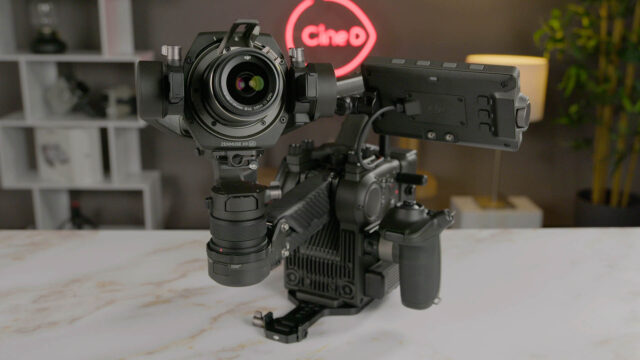
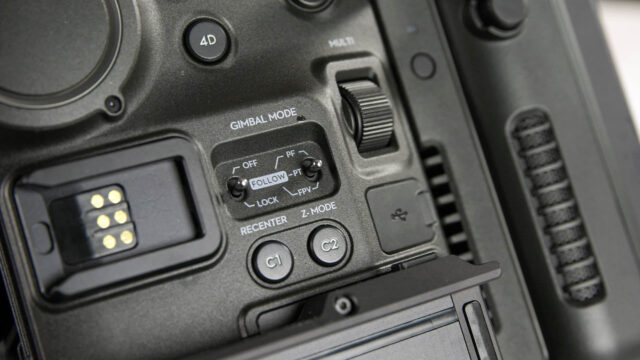
Gimbal settings for the Ronin 4D on the side. Image credit: CineD. 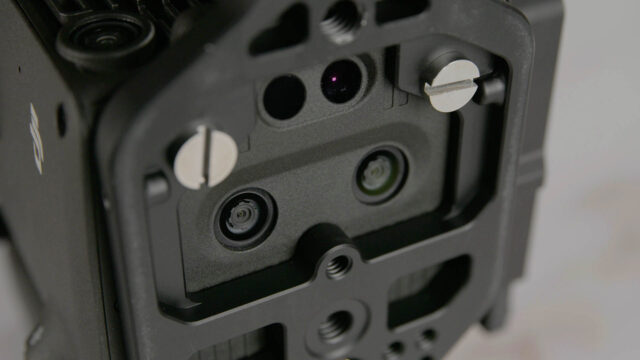
Sensors for the Z-axis are at the bottom … Image credit: CineD 
… and more sensors the side of the Ronin 4D. Image credit: CineD
X9 full-frame camera in 6K and 8K versions
And as if that 4th axis stabilization alone wasn’t enough, DJI built a highly professional cinematography concept around that 4-axis gimbal. The Ronin 4D comes with a full-frame sensor camera, called X9, which can either shoot 6K or 8K, depending on the camera you choose in the package. DJI for now sent us the 6K version for testing, because the 8K version of the X9 is still in development. Yet I am already very, very impressed.
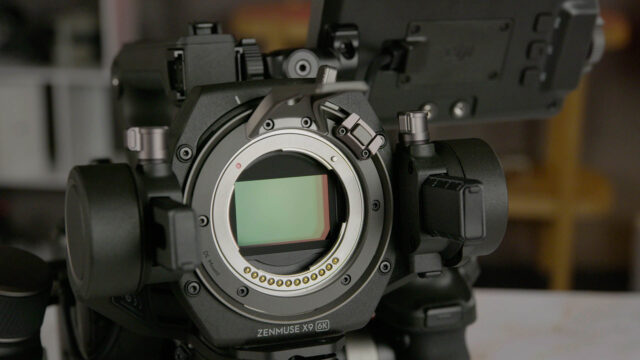
The only “proper” camera recording ProRes RAW internally
This full frame camera records not only in H.264 codec, but also in ProRes 422HQ and ProRes RAW. This is the only camera that can record ProRes RAW internally apart from DJI’s Zenmuse X7 for the Inspire 2 drone. Otherwise, ProRes RAW can only be recorded on Atomos’ external recorders.
There are three different recording media that the Ronin 4D uses: DJI’s own ProSSD with 1TB to record the highest quality modes from the camera. Alternatively, CFExpress Type-B storage cards and normal external SSDs with a USB C port also work.
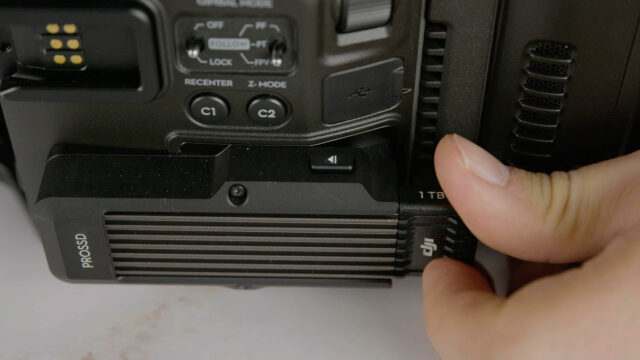
High frame rates, dual native ISO
This X9-6K camera records 6K in up to 60 frames per second, and in 4K, up to 120 frames per second. You can record 6K in full frame in both ProRes RAW and normal ProRes codecs, but if you want 4K ProRes RAW, you have to switch to the Super35 crop mode. Yes, you can even record 4K120 in ProRes RAW, in the Super35 mode. You just need to be aware that these higher frame rates are even further cropped top and bottom, in this case to a 2.39:1 aspect ratio.
The X9-8K camera, when it comes out, will allow for 8K recording at up to 75 frames per second in 12-bit ProRes RAW.
The X9-6K has a dual native ISO of 800 and 5000 ISO and DJI claims that is offers over 14 stops of dynamic range. Because the firmware was not final we didn’t perform one of our standardized lab tests including dynamic range, latitude and rolling shutter tests yet. We will get those tests done soon and publish the results on CineD, of course.
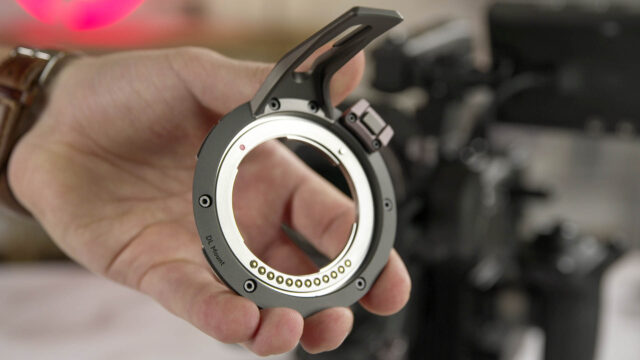
DL Mount for X9 – Image Credit: CineD 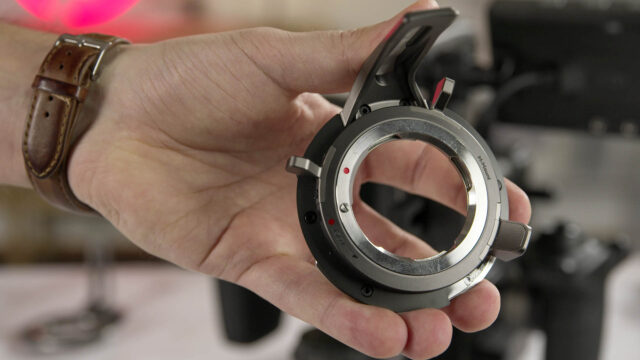
M-Mount for X9 – Image Credit: CineD 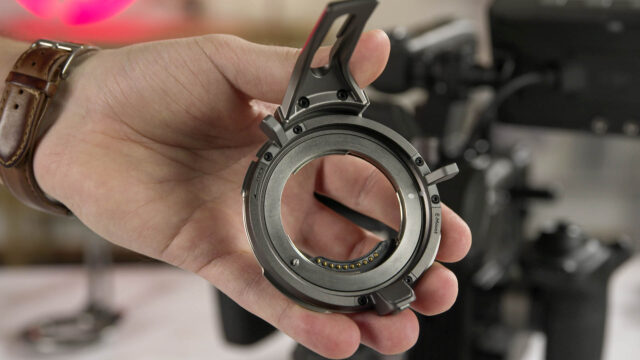
E-Mount for X9 – Image Credit: CineD
DL-mount, E-mount, M-mount – all interchangeable
The X9 cameras support interchangeable lens mounts, including the DL mount, which is DJI’s proprietary mount. The great thing however is that there is also an E-Mount and an M-Mount Adapter which allows you to use Sony and Leica lenses. These mounts work fully electronically, meaning you are able to change the aperture and also the focus on these lenses through the Ronin 4D.
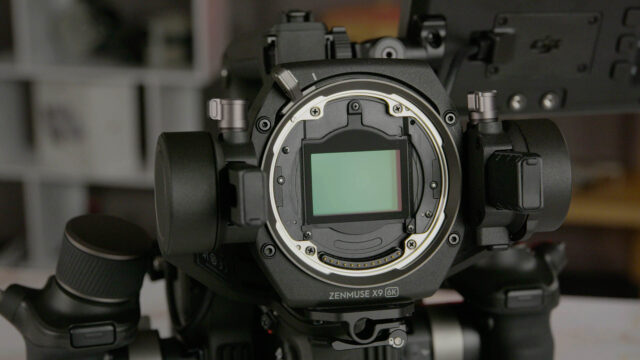
Impressive: 9 stops of built-in ND
What’s absolutely unbelievable for me is how they were able to fit so many mechanical ND filter combinations inside this small X9 camera brain. It has nine full stops of ND built in, ranging between one half and 1/512th strength, which is much more than the built-in NDs of any other camera I can think of. And I noticed no significant color shift at all using these ND filters.
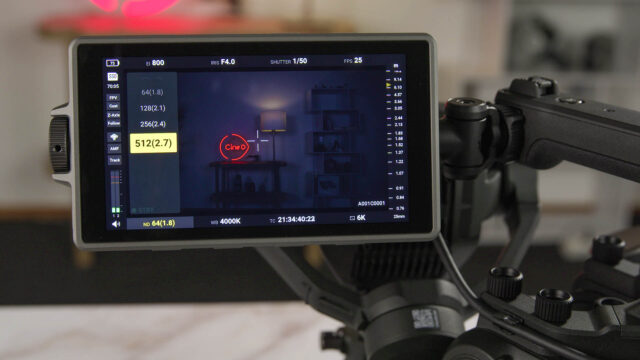
DJI Ronin 4D focusing system – LiDAR and Automated Manual Focus
Let’s talk about focusing. The sensor doesn’t have any phase detection points, so traditional autofocusing isn’t available. But they are shipping the DJI Ronin 4D with a Lidar focusing system that actually works remarkably well. It gives us autofocus control even for E-Mount lenses, for example.
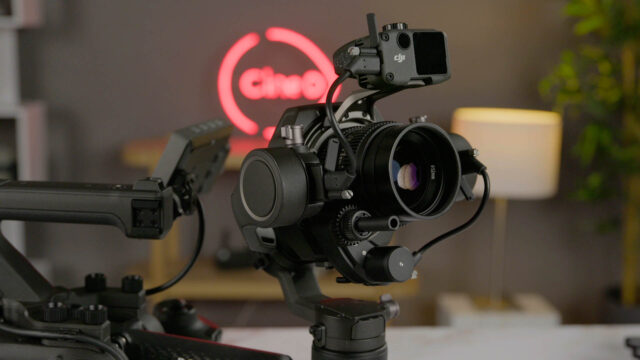
And it’s not only autofocus that is possible – using the focus wheel on the right-hand grip, you can comfortably pull focus manually. The Ronin 4D uses the lens’s motor for that and it allows for remarkably precise focusing – also very helpful is the scale on the side which gives you accurate distance readings after you calibrated the lens. There is also an innovative feature called Lidar Waveform, which is a new assistive focusing tool that shows you the distance from objects in front of your lens in a top-down view.
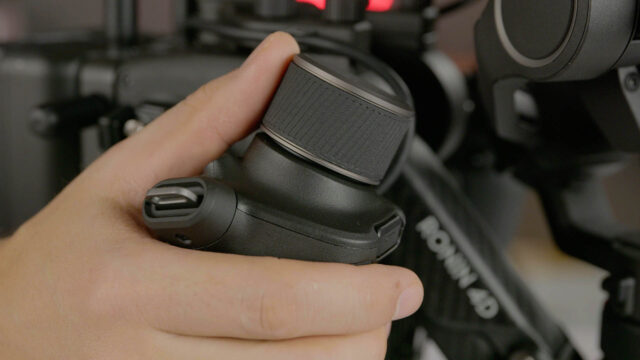
DJI also has a lens motor that allows you to use fully manual lenses with the Ronin 4D and its Lidar technology. By combining the two, fully manual lenses suddenly become autofocus lenses after calibration. Lens calibrations can be saved and easily reloaded after changing lenses.
There is a mode called Automated Manual Focus which is a mixture of autofocus and manual focus – in this mode, the focus wheel on the right grip rotates automatically when the focus point moves, which allows the user to jump in and focus manually. A very smart and intuitive function!
ActiveTrack Pro is also available, a way to track persons and other subjects using DJI’s AI technology to keep them in the shot. We know this already from DJI’s drones. It makes complex movements around subjects much easier to execute.
Build quality of the Ronin 4D
Let’s look at the Ronin 4D’s build quality for a second – you can tell that a lot of cinematographers helped on building this device because it seems like it can take a beating, despite the fact that it has a gimbal built in. It doesn’t seem flimsy at all, everything seems very proper and feels like it can survive the hard conditions on some sets, especially because of course this will constantly be moving during shoots. The body is made of aluminum-magnesium alloy and the Z-Axis arm is made with carbon fibre.
Main monitor & user interface design
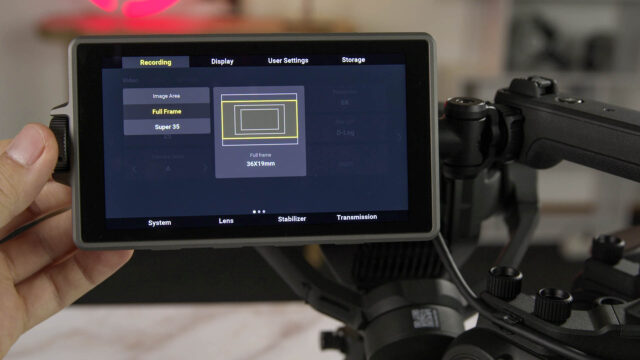
The Ronin 4D’s main monitor is a 5.5 inch 1000-nit touch screen that gives you a very bright and sharp image with access to a user interface that really leaves little to be desired. If you compare this with the camera menus from an average “normal” camera, it’s incredible how intuitive all the settings can be found on this user interface. It reminds me completely of the interface from Blackmagic cameras, which is similarly well organised and optimised for touch operation. However you don’t have to use the touch screen, there is a navigation wheel on the side which also makes it a breeze to use even when you are wearing gloves.
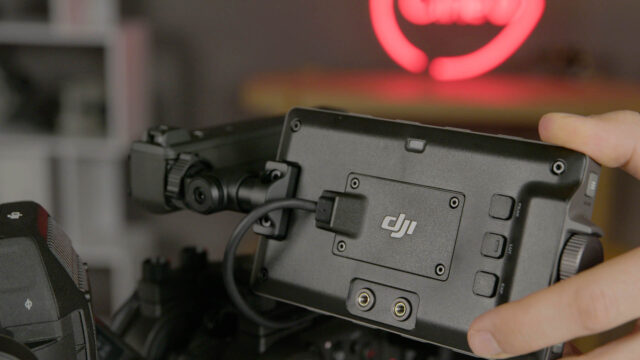
Remote monitoring and full remote Ronin 4D operation
But there’s another monitor available for the Ronin 4D – the entire system, from the ground up, is built to be also fully operable remotely. The 7 inch Remote Monitor, an extra purchase for $1699, is even brighter at 1500 nit. You can simply take off the handles from the camera body and slide them onto the remote monitor. You will also need the extra video transmitter that is sandwiched between the camera and the battery (for $399), but then that enables you to control everything remotely, including focus, the gimbal, recording, all the camera settings, and you can even playback raw footage remotely.
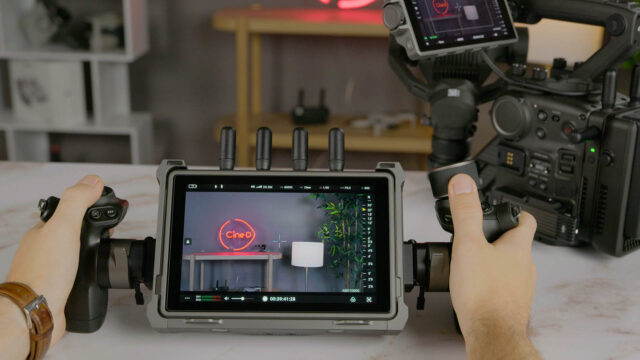
That amazes me – like the built-in gimbal, it’s not just an add-on – remote transmission is engrained into the concept of the Ronin 4D. Of course DJI builds on their drone image transmission technology called O3, so the range is also exceptional – 20,000 feet or 6 kilometers unobstructed, with barely noticeable latency. Of course this frees up a lot of possibilities for remote operation. In lots of sports or action sequences or in car-to-car shoots, it’s more efficient to have an operator and a separate person who is framing the shot on their remote monitor. This can now be executed with almost no preparation – there’s no wireless video transmitter that needs to be connected to a camera, and no camera that needs to be balanced on a gimbal. You’re ready to go out of the box.
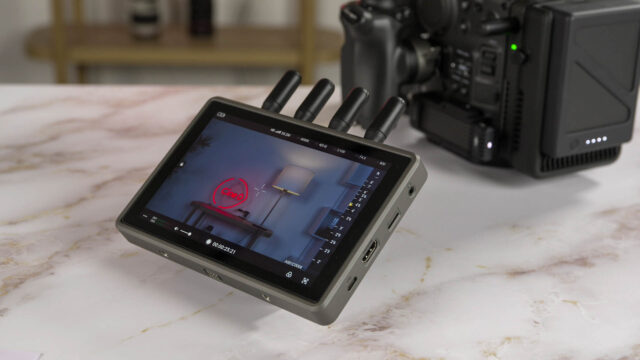
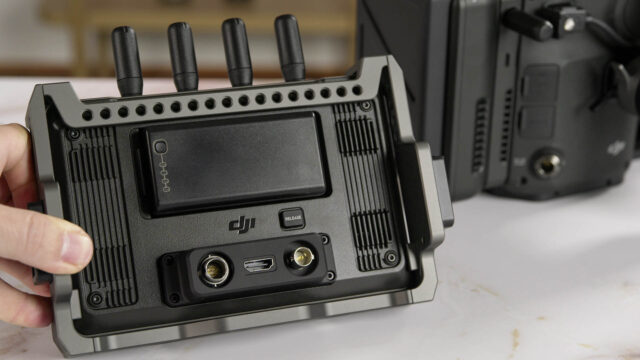
Downside: its weight
So as you can see, I am pretty convinced of the qualities of the Ronin 4D, but it’s of course not perfect.
The most apparent downside is the weight of the device. The Ronin 4D is almost 5 kilograms with all components attached, but that doesn’t include the weight of a lens. Because it is a gimbal, it has to be able to move freely, which is why you really have to hold it like this in front of your body – but that puts a lot of strain on your back quite quickly, so it’s difficult to operate for longer periods of time.

Also, it’s not easy to get it to eye level. Unlike one-hand gimbals, your hands are on the same level with the lens when you hold it on the sides, meaning you have to lift your arms quite high in order to film someone at eye level, and that is even more exhausting and definitely requires some level of fitness in your body. Of course, an Easyrig could be one solution.
Experiment: Can the Ronin 4D work as a shoulder camera?
But here at CineD we wondered, is this really the only way you can operate the Ronin 4D? Couldn’t this be the first gimbal that would actually work well on the shoulder?
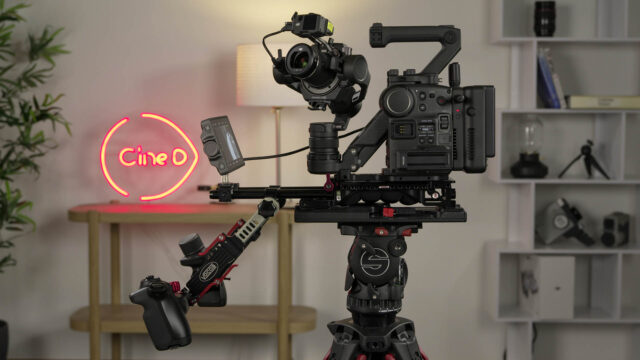
For this Ronin 4D review, our very own gear guru Florian Milz built a little proof of concept out of some rigging components we have here at the CineD studios. Turns out, it’s actually quite possible to use this on the shoulder. Now it’s not perfect, because the lens is much higher than on normal shoulder cameras due to the Z-axis arm. If DJI made cables to connect the handles with the body, this would be a working rig. And it truly gives you the steadiness of a 4-axis gimbal from the comfort of your shoulder, and that’s revolutionary.
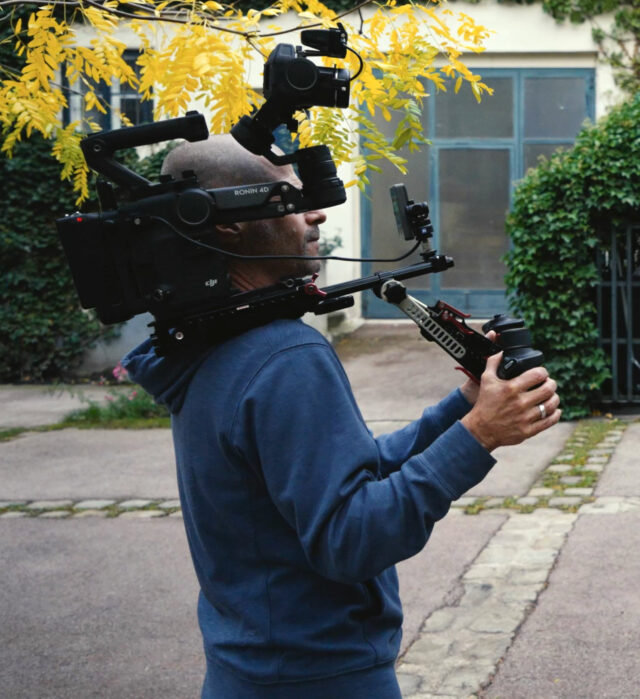
Batteries drain relatively quickly
The Ronin 4D uses the TB50 batteries that DJI also uses for the Ronin 2 and the Inspire drones. According to DJI, they are supposed to give you around 150 minutes of running time on the Ronin 4D, however I found this to be relatively unrealistic in normal shooting conditions. On average, when shooting outdoors in cooling autumn temperatures, a battery lasted for less than one and a half hours. That’s still okay, but I would count that as a downside as you will have to buy a bunch of those batteries to get through a full shooting day. What’s nice is that these batteries heat themselves, so they should still be more reliable in colder conditions than your average large brick battery.
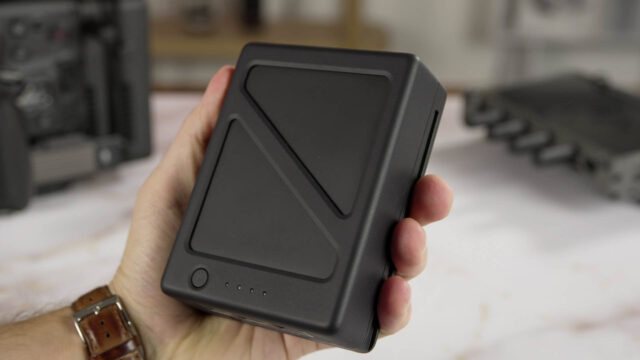
Does it work as a main camera also on a tripod?
Now, you saw that the Ronin 4D is a great camera for moving shots, handheld, if you can deal with its weight. But what about normal tripod work? Can you actually mount heavier, larger lenses on it? After all, it’s a high-end image capturing device that offers ProRes RAW internally from a full frame sensor, so why not use it as the only camera on a shoot?
Turns out, it’s possible, but it takes a bit of trickery.
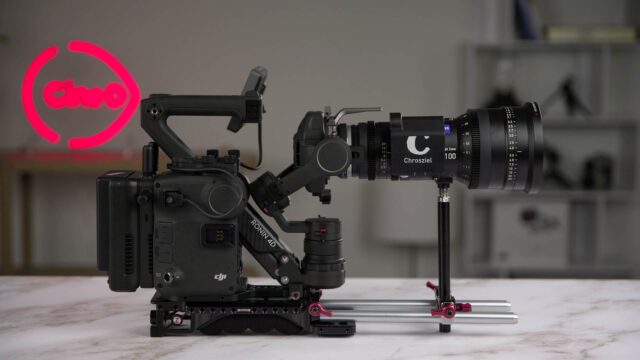
If you want to mount a heavy lens, of course you can’t use the Z-axis arm anymore, but that’s no problem. There are two issues though: You will definitely have to support that lens as the camera mount cannot hold such a heavy lens it on its own. That means you need to use unusually long lens support in order to make that work. And secondly, the lens ends up being very, very high up. BUT it is possible, and the fact that there are adapters to almost every other lens mount from mounts such as the E-Mount also means that you can even mount a PL lens to the Ronin 4D.
Conclusion of the Ronin 4D Review
The DJI Ronin 4D is an extremely complex product and definitely deserves a lot more attention from us in the future, where we look more closely at various aspects of the device in upcoming videos.
Apologies that there are not too many visuals in this Ronin 4D Review, it’s simply been quite dangerous going anywhere with it because anyone who knows anything about cameras would have immediately been curious. Now that it’s released we can move freely amongst people and I will film more things with the Ronin 4D to review its camera capabilities better.
For now, I can only say that this feels like something from the future – it’s nothing short of a revolution and while this is certainly not for everybody, I think it means that most cameras won’t look the same in a few years from now. It’s the beginning of a new category of gimbal cameras, and it will make many shots that have been quite tricky to execute so far, become much more mainstream quite quickly.

Prices and availability
The version with the X9-6K camera will be available starting in December, and the 8K camera will be released at a later date.
The 6K Combo including the Main Body, a Zenmuse X9-6K Gimbal Camera, LiDAR Range Finder, High-Bright Main Monitor, Hand Grips, Top Handle, TB50 Intelligent Battery, and Carrying Case will cost $7,199. The X9-8K version will be available later (they didn’t disclose an exact date yet) and also include a 1TB DJI PROSSD, for $11,499. Unfortunately the 4D Video Transmitter and High-Bright Remote Monitor that I also reviewed as part of this first-look Ronin 4D review have to be purchased separately.
What do you think about our DJI Ronin 4D review? Do you think the device defines a new category of device like me or is it just a pimped-up gimbal with a camera for you? What’s your take? Let us know in the comments below.
